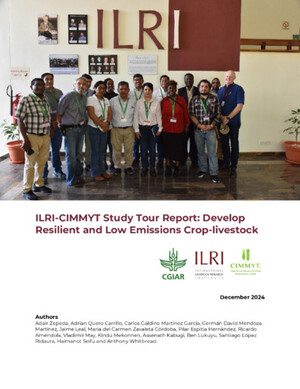
Genetic diversity and population structure of Brachiaria (syn. Urochloa) ecotypes from Uganda
Abstract
Brachiaria (syn. Urochloa) grass is an important tropical forage of African origin that supports millions of livestock and wildlife in the tropics. Overgrazing, conversion of grasslands for crop production and non-agricultural uses, and the introduction of improved forages have threatened the natural diversity of Brachiaria grass in Uganda. This study established a national collection of Brachiaria ecotypes in Uganda and analyzed them for genetic diversity and population structure using 24 simple sequence repeats (SSR) markers. These markers had a high discriminating ability with an average polymorphism information content (PIC) of 0.89 and detected 584 alleles in 99 ecotypes. Analysis of molecular variance revealed a high within populations variance (98%) indicating a high gene exchange or low genetic differentiation (PhiPT = 00.016) among the ecotype populations. The Bayesian model based clustering algorithm showed three allelic pools in Ugandan ecotypes. The principal component analysis (PCA) of ecotypes, and Neighbor-joining (NJ) tree of ecotypes and six commercial cultivars showed three main groups with variable membership coefficients. About 95% of ecotype pairs had Rogers’ genetic distance above 0.75, suggesting most of them were distantly related. This study confirms the high value of these ecotypes in Brachiaria grass conservation and improvement programs in Uganda and elsewhere.
Citation
Namazzi, C., Sserumaga, J.P., Mugerwa, S., Kyalo, M., Mutai, C., Mwesigwa, R., Djikeng, A. and Ghimire, S. 2020. Genetic diversity and population structure of Brachiaria (syn. Urochloa) ecotypes from Uganda. Agronomy 10(8):1193.










